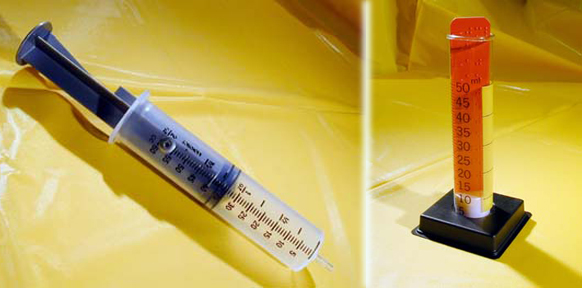Tips from a Blind Scientist
Meet Henry "Hoby" Wedler, a computational organic chemist who received his Ph.D. from the University of California, Davis.
Hoby's natural curiosity, inquisitiveness, and problem solving skills led him to become not only a chemist, but also a home chef, woodworker, teacher, and mentor. If you are the kind of person who likes to know the "how" and "why" of how things work, you too might be a budding scientist.
Hoby says, "the truth is that we can do science just as well as sighted people; we just need slightly different tools in order to do so. Have fun. Explore. Embrace the fact that you can adapt science to make it accessible to you."
To hear more from Hoby, watch this video he made especially for you!
Chemistry Camp
Hoby founded an innovative science program called Chemistry Camp. It was created especially for blind and visually impaired high school students to explore science in a hands-on way. If you ever thought science was out of reach for you, think again!
Read all about how changes in smell (versus visual changes) can indicate chemical transformations; how heat can be used to feel a chemical reaction taking place; and how molecular models can help blind scientists visualize the bonds being broken or formed during a chemical reaction.

Ziploc Ice Cream
Adapted from Out-of-Sight Science Experiments, by Dr. Lillian A. Rankel and Marilyn D. Winograd, a book with 32 step-by-step experiments for blind youngsters to do at home with family and friends, or as part of a science fair project. Grades 2-5.
DOWNLOAD THE RECIPE: PDF
DOWNLOAD THE RECIPE: BRF
What You'll Need
Note: 1 cup of soy milk can be substituted for the milk and cream. If you use soy milk, add 1 teaspoon of vanilla.
- 1. Add the 1/2 cup of milk, 1/2 cup of cream, 1/4 cup of sugar, and 1/2 teaspoon of flavoring together in a large measuring cup and stir until the sugar is dissolved.
- 2. Pour the ice cream mixture into the quart-sized Ziploc bag and seal the top.
- 3. Add two cups of ice and 1/2 cup of the salt to the gallon-sized Ziploc bag.
- 4. Put the quart-sized Ziploc bag with the ice cream mixture into the large bag containing the ice and zip the large bag closed, taking care to remove as much air as possible before sealing.
- 5. Do not hold the bag in your bare hands. Put on mittens or wrap a towel around the ice-filled bag. It will be cold enough to cause tissue damage to your hands!
- 6. Gently shake the bag and/or roll it around on the table for ten minutes.
- 7. Open the ice-filled Ziploc bag and take out the ice cream bag. Check to see if the ice cream is frozen enough. If the ice cream is too soupy, put the smaller bag back inside the larger ice bag, add more ice and salt, and seal up the larger Ziploc bag. Continue rolling and gently shaking the bag for another five minutes.
- 8. Carefully wipe the top of the ice cream bag with a damp paper towel to remove the salt.
- 9. Open the ice cream bag, spoon out the ice cream, and eat!
Instructions
Use a tray or cookie sheet as a work surface.
What's Happening?
To turn this liquid mixture into ice cream, salt was used to lower the freezing point — just enough to harden the liquid inside the bag into ice cream.
Why so much shaking? It's time to learn another term: emulsion. The reason you had to do so much shaking is because there were two ingredients in the mixture that don't mix well: fat (in the milk and cream) and water (in the milk). There is a saying in science that "like dissolves like." Fat and water are not alike, so they don't mix well. Ice cream is an emulsion where the creamy fat and watery milk are suspended within each other rather than being chemically bonded together. Store-bought ice cream has stabilizers like gelatin to keep the ice cream airy and smooth.
Many salad dressings are also emulsions that need to be shaken right before use.
This activity was created by Melissa Riccobono for Great Expectations.











